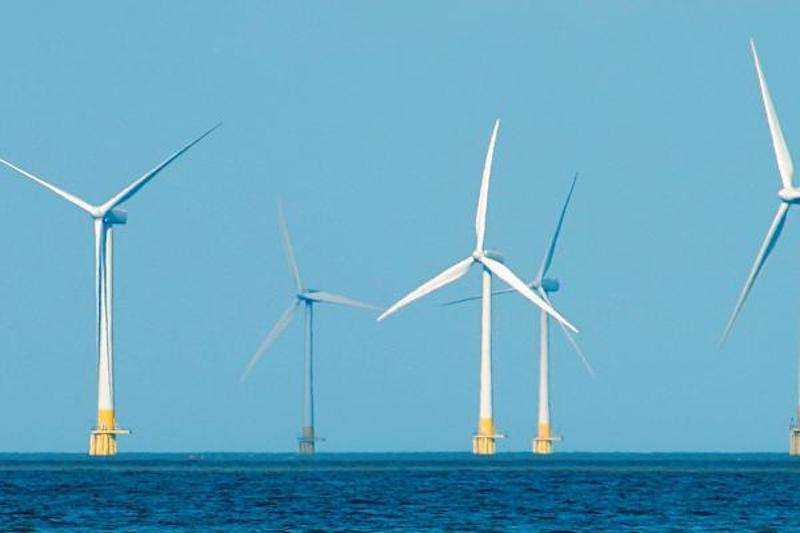A trifecta of new federal policy moves on offshore wind emerged this week, with a White House announcement of plans to “advance a National Offshore Wind Supply Chain Roadmap and designating offshore wind vessels as Vessels of National Interest to facilitate more offshore wind construction.”
In a June 23 meeting at the White House, the Biden administration presented its “federal-state offshore wind implementation partnership” with 11 East Coast states.
A top priority is Marad designating offshore wind vessels – from crew transfer boats to service operations vessels and heavy-lift installation ships – as “vessels of national interest’ for support through the Federal Ship Financing Program, with priority for review and funding.
“The program assists the domestic shipbuilding industry, providing support for U.S. shipyards to modernize their facilities, to build and retrofit vessels, and to assist U.S shipowners to cost-effectively obtain domestically produced new vessels,” according to a White House statement.
The White House event included the Biden administration’s climate advisor Gina McCarthy, Energy Secretary Jennifer Granholm, and Interior Secretary Deb Haaland, the governors of 11 East Coast states, AFL-CIO President Liz Shuler. Offshore wind company executives David Hardy of Ørsted, Jeff Grybowski of US Wind, Bob Blue of Dominion, and Lars Pedersen of Vineyard Wind participated along with Liz Burdock, president and CEO of the Business Network for Offshore Wind.
“We briefed everyone with two infographics, produced by the network, detailing the state of the supply chain and what we need to accelerate progress,” Burdock wrote in a memo to the group’s members. “President Biden was not on the original schedule, then he was just supposed to drop by. He ended up staying for 90 minutes.”
Burdock gave a presentation showing the U.S. offshore wind industry has generated $12.7 billion in new public and private investment, including construction or expansion of almost a dozen manufacturing facilities along the coast.
Her group maintains a database of wind market contracts that now show 165 percent growth since January 2021, said Burdock.
“I was realistic, too, and said to the President that we are trying to do in 8 years what it took Europe 30 years to accomplish,” she told network members that next day. “I said it was imperative that the federal and state governments work closely together to unlock the full supply chain potential. Doing so would foster opportunities in our Tier 2 and Tier 3 suppliers, thousands in number, that will form the backbone of the domestic industry.
“I concluded by sharing with the President, his officials, and the Governors that by 2030, the U.S. market and U.S. suppliers would be a major force on the global stage, but we needed their continued support.”
The same day brought new documents from the federal Bureau of Ocean Energy Management.
A newly standardized “process for environmental reviews” of offshore wind construction and operations plan was published. A new draft fisheries mitigation plan – BOEM’s new effort to move forward on resolving conflicts between the fishing and wind industries – was also released for public comment.
The environmental review document outlines standards for making sure BOEM’s process complies with the National Environmental Policy Act.
The planned fisheries mitigation “guidance” document to be prepared this summer could help bridge the gap between BOEM and commercial fishing industry groups who say the agency has lagged behind with anticipating and responding to potential conflicts over wind energy projects.
According to BOEM the goal is to “mitigate impacts to fisheries in the areas of project siting, design, navigation, access, safety, and financial compensation. This guidance will help ensure consistent use of data and methodologies across projects and states and assist lessees and BOEM in the preparation and review of construction and operations plans.”
The White House statement outline a new “Federal-State Offshore Wind Implementation Partnership” made up of the White House National Climate Advisor; the secretaries of the Interior, Energy, Commerce, and Transportation departments; and East Coast states leading on offshore wind development: Connecticut, Delaware, Maine, Maryland, Massachusetts, New Hampshire, New Jersey, New York, North Carolina, Pennsylvania, and Rhode Island.
“Going forward, the partnership will provide a forum for new initiatives and in coordination with existing efforts to address ocean co-use, transmission needs and other offshore wind priorities that may benefit from additional federal, state, and regional coordination,” according to the White House statement. “The partnership will expand to include Governors from the West Coast and the Gulf of Mexico as offshore wind energy projects develop in those regions.”
The intergovernmental agreements will commit to:
- Working collaboratively to enhance U.S. domestic manufacturing, logistics, and workforce development network to support the orderly and expeditious development of a robust U.S. offshore wind industry, across both fixed-bottom and floating technologies.
- Addressing commonly identified high-priority gaps within the offshore wind manufacturing, logistics, and workforce network, and to facilitate regional solutions including, where possible, the use of public funds to advance these efforts.
- Engaging with underserved communities, ocean users, tribes, local governments, and other stakeholders to ensure that supply chain development provides equitable benefits and minimizes any potential adverse impacts.
- Aligning planned offshore wind procurements with offshore wind lease auctions.
- Supporting development of a domestic fleet of offshore wind installation and service vessels.




